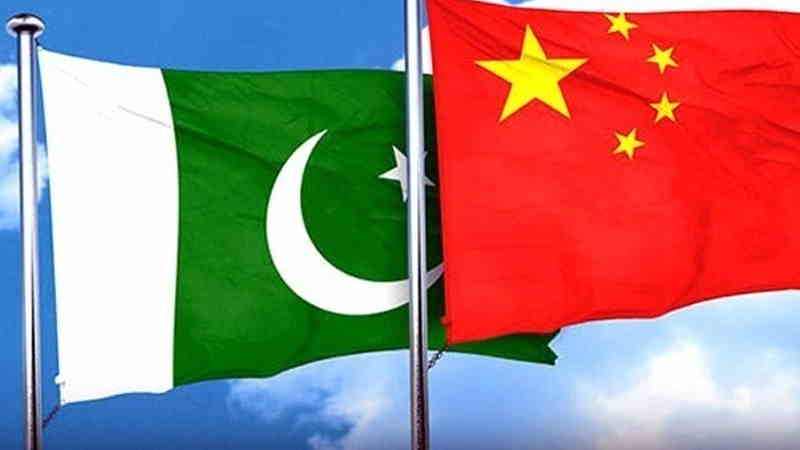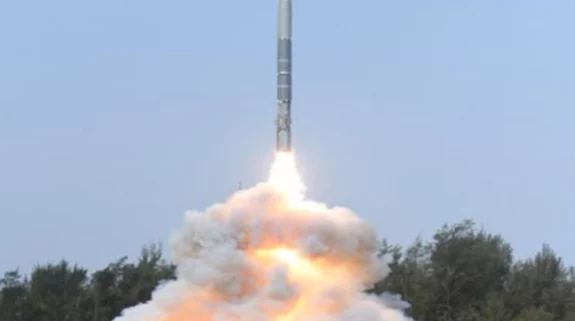By Mrityunjoy Kumar Jha and Atul Aneja
The nuclear nexus between China and Pakistan continues to alarm the rest of the world, which is already reeling under the impact of the Covid-19 pandemic.
China’s long history of support to Pakistan with nuclear technology is well established. Beijing sees this collaboration in a broader geopolitical context to counter India, which during the Cold War was a key ally of the former Soviet Union, a country that had fallen out with Beijing in the sixties, leading to a brief war between the two in 1969. The Chinese now see India as a strong partner of the United States—a country that is engaged in countering Chinese heft in the Indo-Pacific region.
China and Pakistan have become increasingly close over the past decade, particularly under the China Pakistan Economic Corridor (CPEC), the flagship component of Beijing’s international Belt and Road Initiative (BRI), which was announced in 2015.
The first part of an investigative report published by the website The Klaxon had detailed the emergence of a new clandestine network engaged in developing Pakistani atomic weapons, involving the Pakistani embassy in Beijing and a Chinese company based in the coastal province of Zhejiang.
Read the first part: After Quad summit, a new China-Pakistan nuke network exposed
In its second part of the report by Anthony Klan, which sourced its findings from multiple, high-level, foreign intelligence sources reveals how China has shifted transportation of nuclear fuel to Pakistan from air to sea, in order to avoid detection. “The (Pakistan Atomic Energy Commission) has cited non-availability/timely flight permissions for air sorties as the reason for the change in pattern. The change in pattern could provide a more secure/covert way for Pakistan to receive sensitive materials and equipment from China,” the report says citing multiple intelligence sources.
According to the report, intelligence agencies have “detected” an “unusually high” level of demand for nuclear fuel from Pakistan’s new Karachi Nuclear Power Plant Unit-2 (KANUPP -2 ). Interestingly, the surge in demand comes amid recent activities at Pakistan’s Khan Research Laboratories, which produce highly enriched uranium. While KANUPP-2 is subject to the safeguards of the International Atomic Energy Agency (IAEA), the United Nations nuclear watchdog, Pakistan’s Khan Research Laboratories are not subject to any IAEA safeguards.
The Khan Research Laboratories established by Pakistan’s notorious “scientist” Dr Abdul Qadeer Khan (A Q Khan), at Kahuta, about 50kms from Islamabad in the nation’s north, plays a key role in Pakistan’s nuclear weapons development. It is also closely involved in the development of long-range missiles. A Q Khan, well-known for his role in developing Pakistan’s nuclear arsenal, confessed on live television to having illegally proliferated nuclear weapon technology to Iran, Libya, and North Korea over the course of decades in 2004.
It is well-established that China has been playing a central role in Pakistan’s nuclear weapons proliferation. Usually this has been done by simultaneously developing nuclear weapons facilities “in parallel” with civilian nuclear power plants in Pakistan.
For instance, Pakistan’s Chashma Nuclear Power Complex (or CHASNUPP) and the Khushab Nuclear Complex are located in Pakistan’s Punjab Province.
While CHASNUPP is a major nuclear power plant complex which generates electricity for industrial purposes and whose four nuclear reactors, and is subject to inspections by the International Atomic Energy Agency (IAEA), the Khushab Nuclear Complex is a plutonium production nuclear reactor and is not subject to IAEA. Its four nuclear plants became operational between 1997 and 2014.
The report says the “simultaneous expansion” of nuclear plants at the two facilities highly suggests China’s close involvement in Pakistan’s nuclear weapons proliferation.
“This uncanny parallelism leads one to believe that Pakistan has received most of the equipment/material for operationalising un-safeguarded (Khushab) reactors from China along with the supply destined for the civilian power plants at Chashma,” one high-level intelligence source told The Klaxon.
Between the four Khushab reactors, Pakistan can produce between 24 and 48 kilograms of “weapons-grade plutonium” each year.
Apart from alleged direct transfers of nuclear fuel and sensitive technology, “Beijing was also acting as a “conduit” between Pakistan and other countries, one high level source said.
“In one such case, NES Technologies Pakistan made efforts to procure some sensitive items manufactured by MOXA, a Taiwanese based company engaged in providing IT solutions, and to avoid being detected, NES Technologies requested the supplier to deliver the items at a location in China, suggesting that its onward shipment to Pakistan would be arranged by a Pakistan firm,” sources told The Klaxon.
The report said that in September 2018, Pakistan allegedly made similar efforts to source sensitive equipment from a Taiwanese company called FOMEX Technologies Co Ltd, with arrangements again allegedly made through China. Taiwan’s FOMEX Technologies allegedly told Pakistan to “make the payment in cash” to “evade the tracking of the transaction and a Pakistan front company DuTu Impex, sanctioned by the US, was involved in the procurement process,” one senior intelligence source further elaborated, “FOMEX Technologies was requested by the Pakistan front company to export the machinery to ‘Amber Capacitors’, another front company used by Pakistan’s Strategic Plans Division.”
Strategic Plans Division Force (SPD Force) is under Pakistan’s National Command Authority, responsible for protection of its tactical and strategic nuclear weapons stockpile and the strategic assets. As usual China and Pakistan both have denied these allegations.
The use of front or shell companies for trafficking of sensitive nuclear technologies was discovered by the US authorities two years back in 2019.
According to the report, in January 2020 the US Department of Justice announced it had indicted five men for allegedly operating an “international procurement network” to “export US origin goods to Pakistan’s nuclear program.”
Between September 2014 and October 2019, the men allegedly engaged in 38 illicit shipments via a “network of front companies” registered in Pakistan, the UK, Canada and Hong Kong.
It followed the same pattern, the goods were purchased from 29 legitimate US companies, using the sham companies, however the items were allegedly being purchased on behalf of the Pakistan Atomic Energy Commission (PAEC) and the Advanced Engineering Research Organisation (AERO), an arm of the Pakistan Defence Force. Both the PAEC and AERO are on the US Commerce Department’s “Entity List”, of companies considered to be engaging in activities “contrary to US national security or foreign policy interests” and so require special export licenses to obtain products from the US.
“The alleged behaviour of these five individuals presented more than a violation of U.S. export laws. It posed a potential threat to the national security interests of the United States and to the delicate balance of power among nations within the region,” US Homeland Security Investigations spokesman Jason Molina said at the time.
One senior intelligence source told The Klaxon that over the past two years “intensified activity has been observed in the international nuclear circuit” with Pakistan a key player.
“A serious risk exists in the reverse engineering of controlled items, alongside the use of some original parts,” the source said.




















